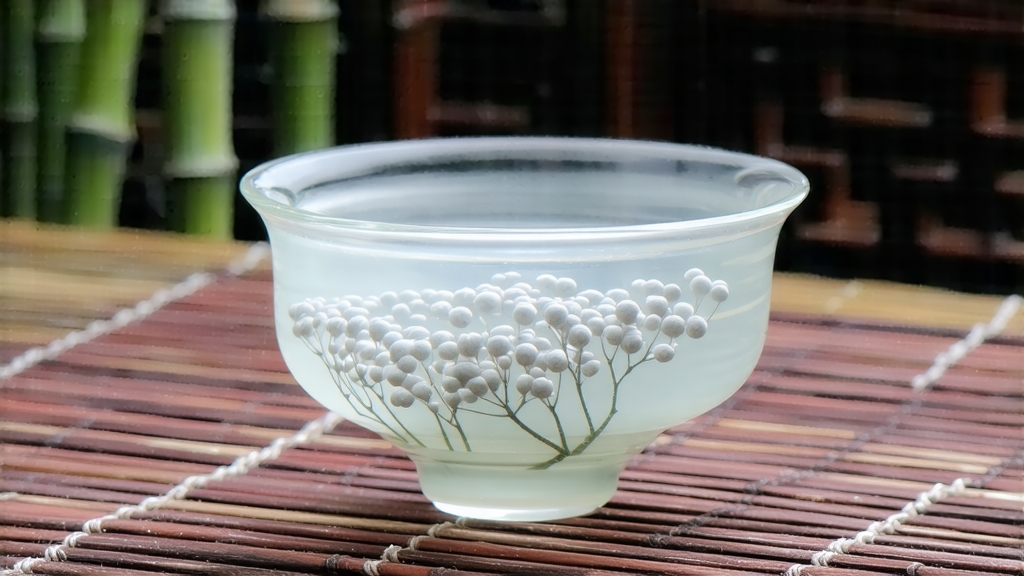
Among the six great families of Chinese tea, white tea is the least theatrical yet most elusive, and within that quiet clan Silver Needle—Bai Hao Yin Zhen—occupies the highest throne. International drinkers often meet white tea through bagged “bai mu dan” blends, but to taste Silver Needle is to encounter the uncarved block of Camellia sinensis: bud alone, no leaf, no twist, no roast, no apology.
History: From Imperial Tribute to Global Minimalism
Song dynasty emperor Huizong (1082-1135) wrote rapturously of “white buds among the tribute cakes,” but the first verifiable record of loose Silver Needle appears in the late 1700s, when tea makers in northern Fujian abandoned the compressed cake style and began air-drying individual buds for the scholars and merchants of Fuzhou. By 1857 a particularly downy cultivar—Da Bai Hao, “Big White Down”—was identified in Tai Mu Shan, and buds plucked in early March became so valuable that they were weighed against silver on the counter, hence the name. Exported through Hong Kong in the 1890s, the tea enchanted European apothecaries who valued its “cooling” reputation; in the post-war West it faded, only to resurge twenty years ago when specialty cafés discovered that minimal processing could yield maximal elegance.
Micro-Terroir: Where Mountain, Sea and Mist Conspire
Authentic Silver Needle is confined to three counties hugging the East China Sea: Fuding, Zhenghe and Jianyang. The region’s granitic soils drain quickly, forcing roots to dive deep for minerals, while the warm days and cold nights of March extend bud growth, stacking amino acids. A constant maritime fog acts like a light diffuser, preventing the buds from reddening under ultraviolet light and preserving the silvery pubescence that gives the tea its name. Within Fuding itself, the villages of Dian Tou, Guan Yang and Pan Xi have become micro-appellations; buds picked at 600 m elevation carry more orchid fragrance, whereas lower gardens yield sweeter, creamier infusions.
Plucking: Dawn, Calm and the One-Bud Rule
The picking window is cruelly short—usually five to seven days around the Qingming festival when the bud reaches 2.5–3 cm but has not yet unfurled into a leaf. Experienced pickers use thumbnails, not shears, to avoid crushing the hypanthium; a swift upward flick deposits the bud into a bamboo basket lined with banana leaf. The daily quota for a skilled woman is barely one kilogram fresh weight, which will shrink to about 200 g after drying. To protect the down, baskets are never stacked or covered with plastic; instead they are carried on shoulder poles so that air continues to flow.
Craft: The Art of Letting Go
White tea’s processing is often described as “two withers and a bake,” yet the simplicity is deceptive. After picking, the buds are spread on bamboo trays 2 cm thick and left in a shaded corridor where louvers filter the wind. For the first twelve hours the leaf cells remain alive, continuing respiratory metabolism that converts grassy hexanals into sweeter aldehydes. Temperature is kept below 28 °C; above that, enzymatic browning accelerates and the bud tips turn ochre, a flaw called “red head.”
Once the buds lose about 70 % moisture they enter the sun-withering stage, unique to white tea. Trays are moved into a courtyard tiled with white limestone that reflects rather than absorbs heat. Under gentle March sunlight the buds rock through a slow seesaw of drying and rehydrating as dew falls at dusk. This cycle may repeat for forty-eight hours, during which the ratio of L-theanine to polyphenols rises, explaining the tea’s signature umami-sweetness.
The final bake is not roasting but desiccation. Traditionally a charcoal basket oven fired with longan wood holds a bamboo rack 40 cm above embers that hover around 40 °C. Modern facilities use electric ovens set to 50 °C for fifteen minutes, yet many masters still finish with charcoal to coax a whisper of smoke that marries with the orchid aroma. The goal is 5 % residual moisture—any lower and the down becomes brittle; any higher and the tea risks mold during aging.
Aging: The Slow Oxidation That Wasn’t There
Unlike pu-erh, Silver Needle is not microbially fermented; instead it undergoes extremely slow non-